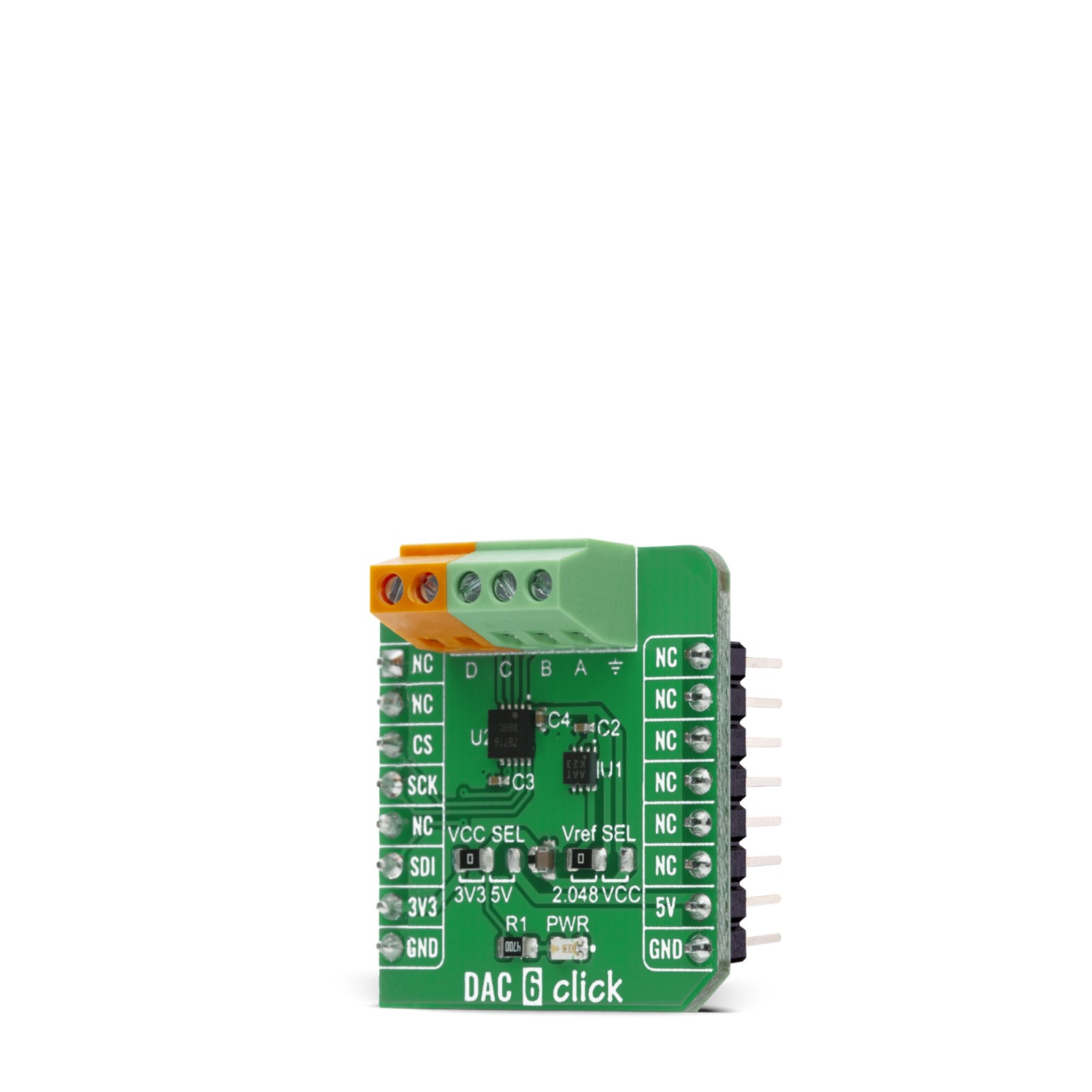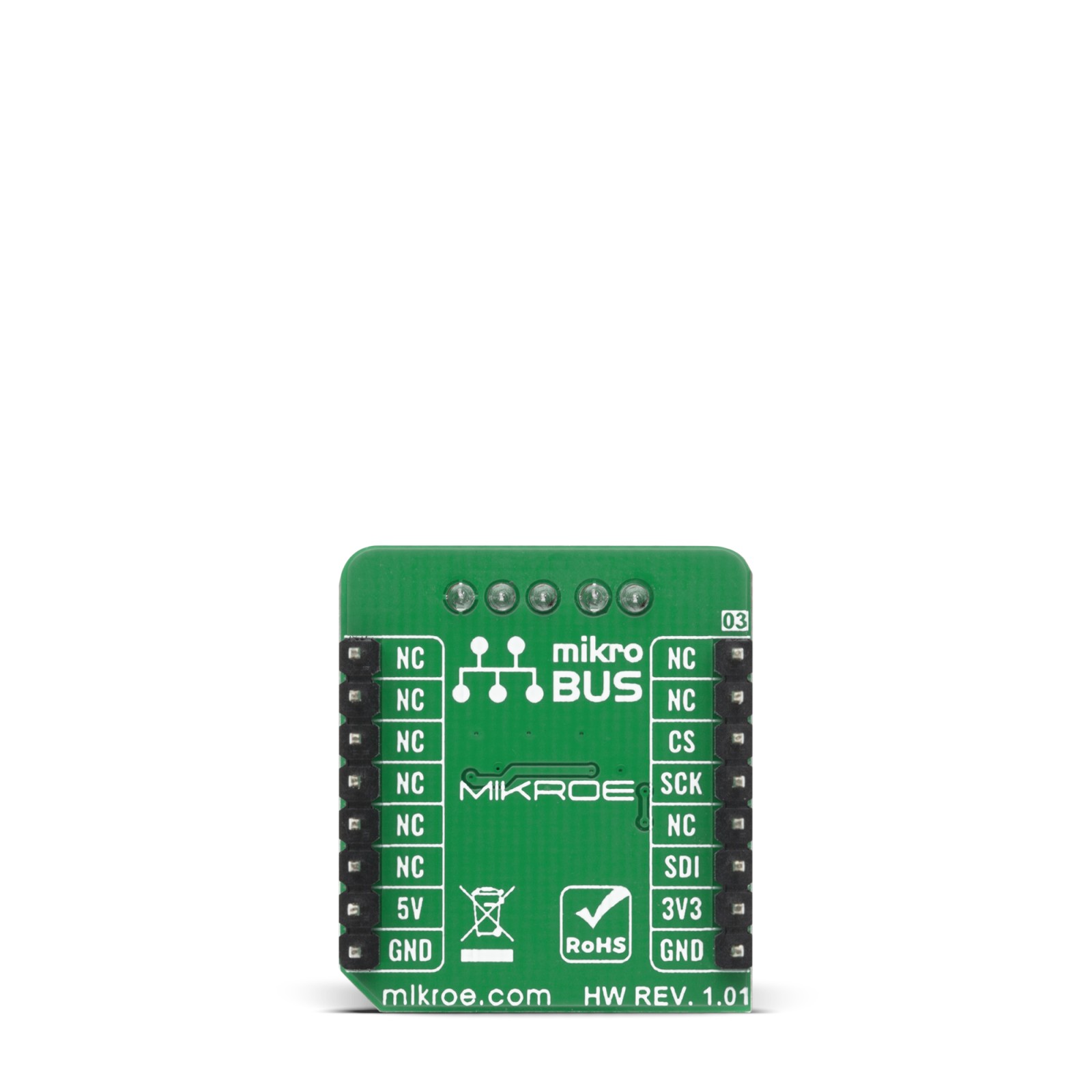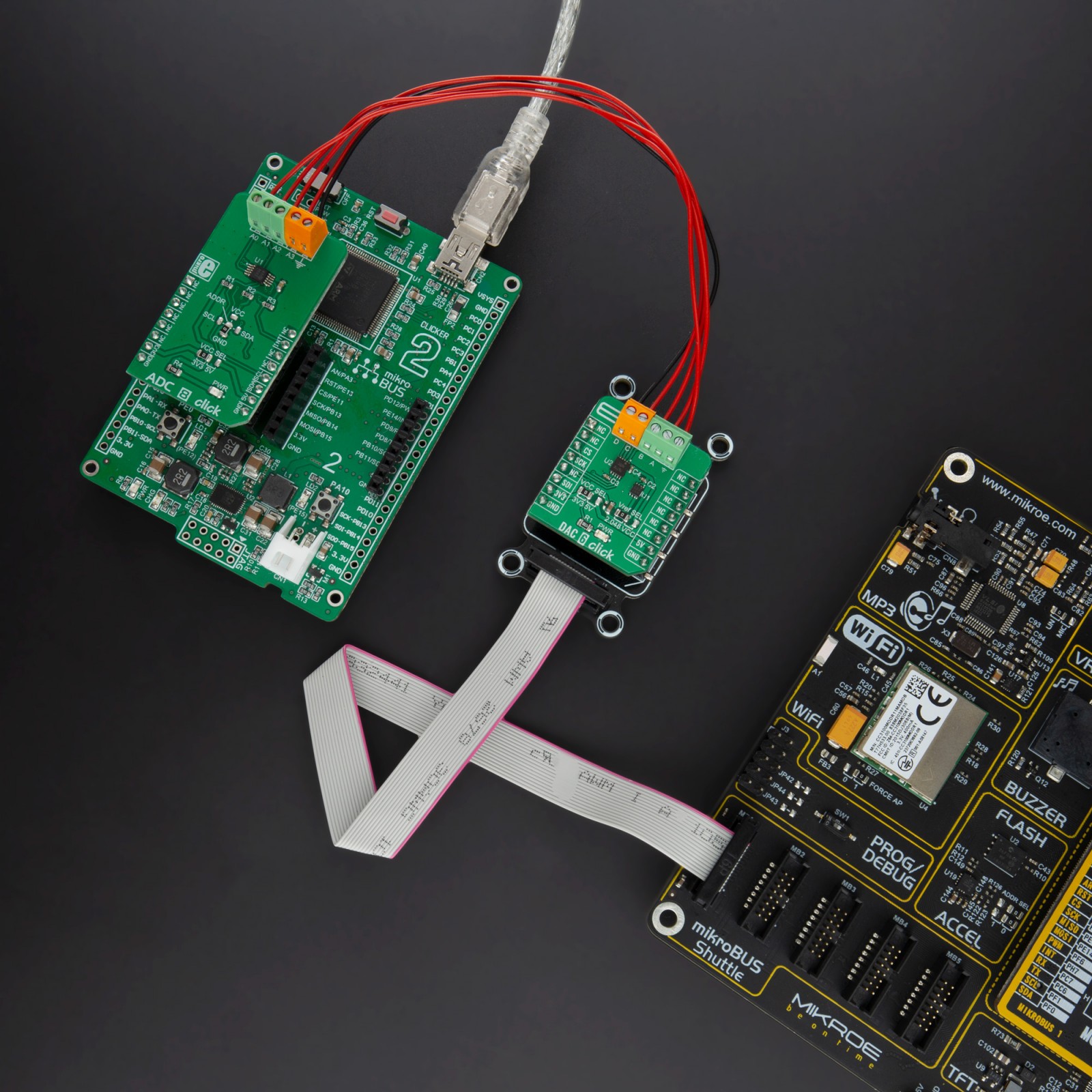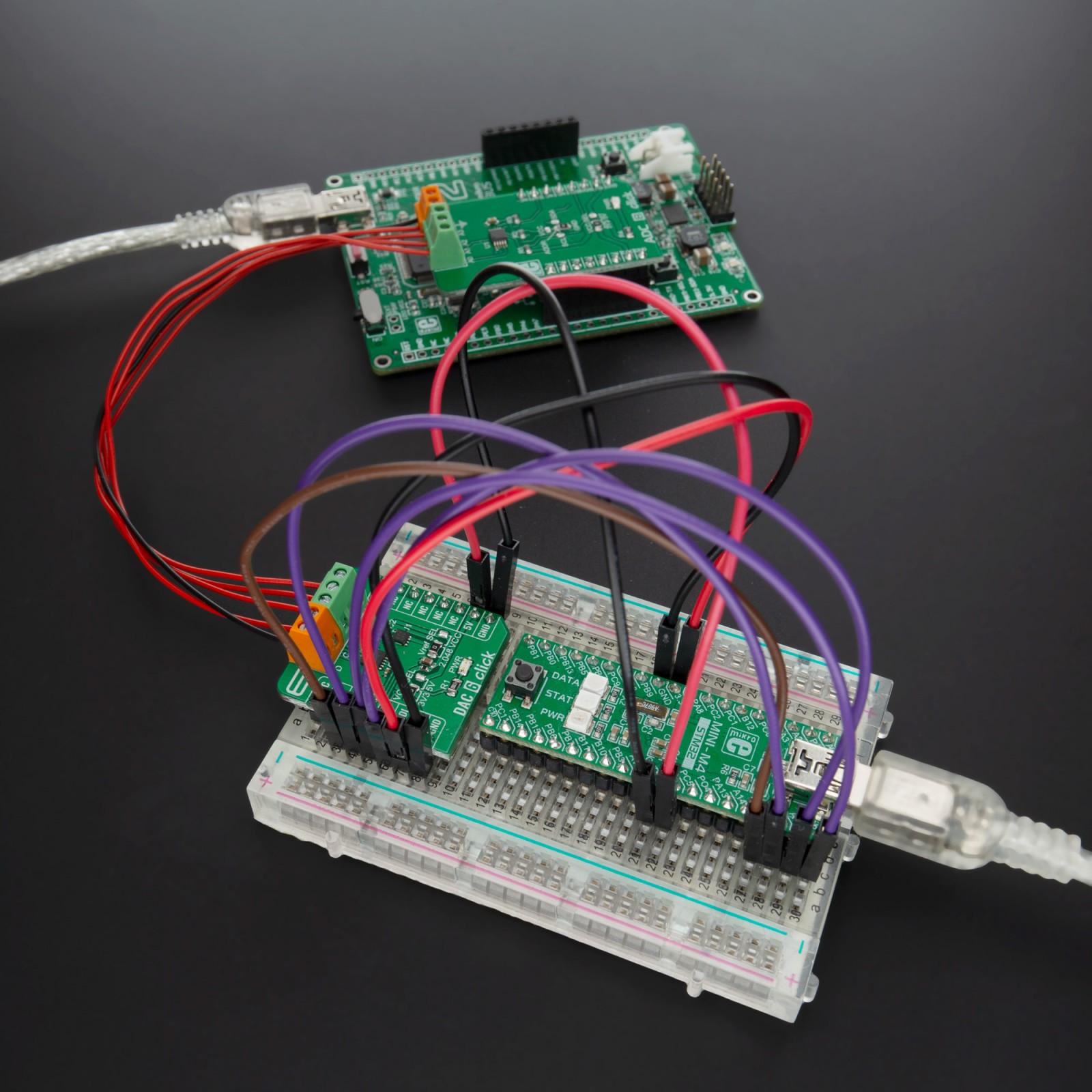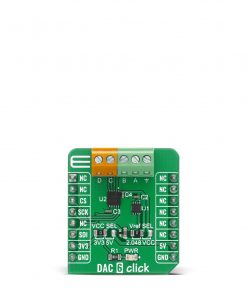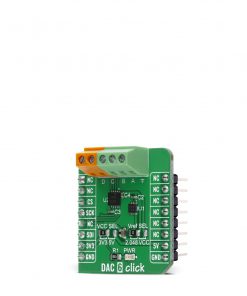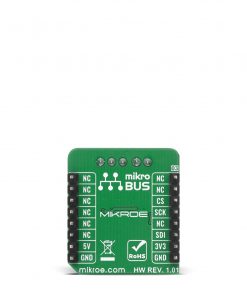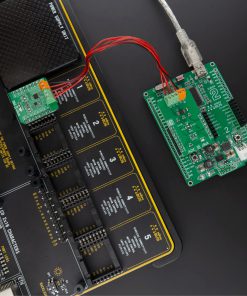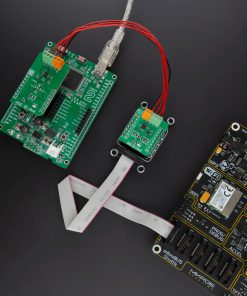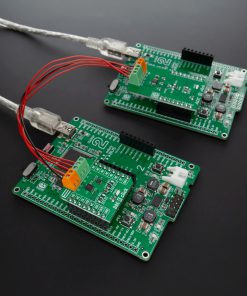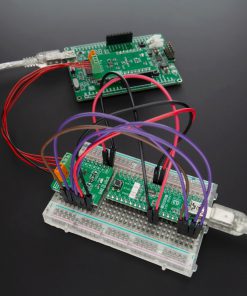DAC 6 Click
R335.00 ex. VAT
DAC 6 Click is a compact add-on board that contains a fully-featured, general-purpose voltage-output digital-to-analog converter. This board features the DAC104S085, 10-bit, micro-power, a quad digital-to-analog converter with rail-to-rail output, from Texas Instruments. It uses the 3-wire SPI serial interface for communication, that operates at clock rates up to 40 MHz. Besides that, DAC 6 Click has also MCP1501 onboard, which is a high-precision, buffered, 2.048V voltage reference. Many features such as low power, rail-to-rail Voltage output, quad-channel output, and more, make it an excellent choice for use in battery-operated equipment, digital gain and offset adjustment, programmable voltage and current sources, and many more.
DAC 6 Click is supported by a mikroSDK compliant library, which includes functions that simplify software development. This Click board™ comes as a fully tested product, ready to be used on a system equipped with the mikroBUS™ socket.
Stock: Lead-time applicable.
| 5+ | R318.25 |
| 10+ | R301.50 |
| 15+ | R284.75 |
| 20+ | R274.03 |


